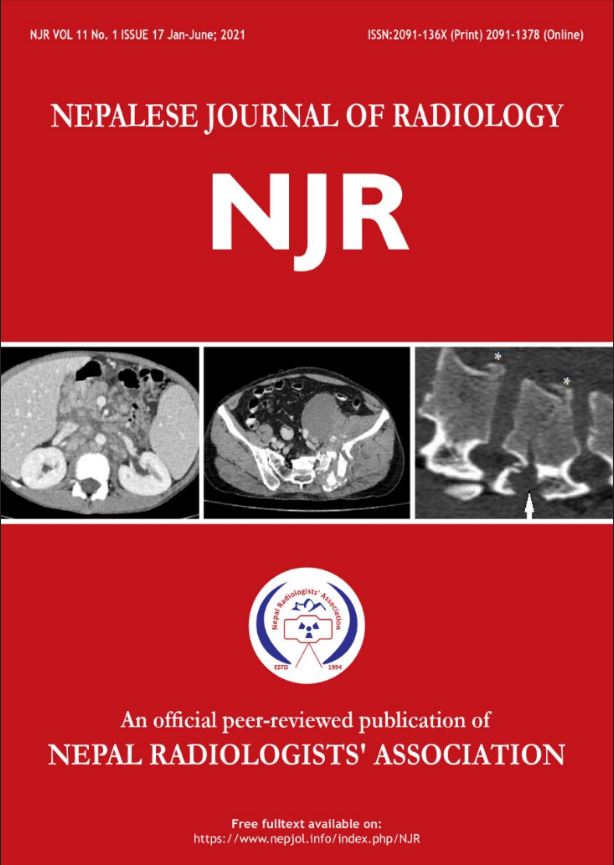Intraosseous Hydatid cyst of sacrum and pelvic bone. An Uncommon Occurrence
DOI:
https://doi.org/10.3126/njr.v11i1.36136Keywords:
Hydatid disease, Skeletal hydatid, MisinterpretationAbstract
Skeletal hydatidosis results from deposition of the larval form of the Echinococcus, a genus of tapeworm. The incidence of bone disease is extremely low as most larvae are trapped by the liver and lung upon release of the embryo into the portal blood stream. Bone hydatid disease is often asymptomatic and its diagnosis is usually made at an advanced stage when lesions have become extensive. The interpretation of imaging studies can prove very confusing as there are no characteristic features and this often leads to misdiagnosis. We present a case of a 83 year-old man who was admitted to BPKIHS, Dharan complaining of pain and swelling in left hip.CT scan showed lytic lesion in sacral vertebra involving left sacroiliac joint and ilium and was falsely diagnosed as tuberculosis or neoplastic in nature. The result of FNAC concurred on an unexpected diagnosis of a hydatid cyst. This case illustrates that in the absence of high index of suspicion for echinococcal infection, imaging findings of hydatid disease in bone mimic to those of other skeletal pathologies and can lead to misinterpretation.
Downloads
Downloads
Published
How to Cite
Issue
Section
License
Copyright (c) 2021 Nepalese Journal of Radiology

This work is licensed under a Creative Commons Attribution 4.0 International License.
This license enables reusers to distribute, remix, adapt, and build upon the material in any medium or format, so long as attribution is given to the creator. The license allows for commercial use.




